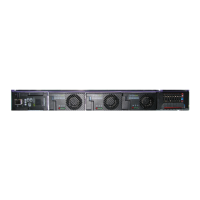010-619-J0 Rev B Page 38
7.1.5 Turning Off
The Turning Off state is entered because a short delay is required before the rectifier actually turns off
to take care of any initialization requirements.
When this short delay has elapsed, a transition to the Off state is made.
7.2 Main Rectifier Modes
In addition to main rectifier states, there is a set of main rectifier modes. These modes are divided into
two categories:
7.2.1 Output Voltage Modes
Voltage modes, under software control, can directly adjust the output voltage. Situations, such as the
rectifier being in current limit, can change the output voltage with no software control.
The following table describes the five output voltage modes.
7.2.2 Output Current/Power Modes
These four output current/power modes directly affect the output current and power:
Table 4: Output Voltage Modes
Output Voltage
Modes Active when...
Float Output voltage is set to the float voltage setting.
Equalize Output voltage is set to the equalize voltage setting.
Battery Test Output voltage is set to the battery test voltage setting.
Safe Output voltage is set to the safe mode voltage setting.
Manual Test Output voltage can be manually adjusted outside of the standard
adjustment ranges.
Table 5: Output Current/Power Modes (Sheet 1 of 2)
Output
Current/Power Mode Output current and power limit have been reduced due to:
Temperature foldback
mode
High temperature of the heatsink or internal ambient temperature sensor.
AC foldback mode Low AC input voltage.
NOTE: Reduces the risk of tripping an AC breaker due to increased AC
current draw as the AC voltage decreases.

